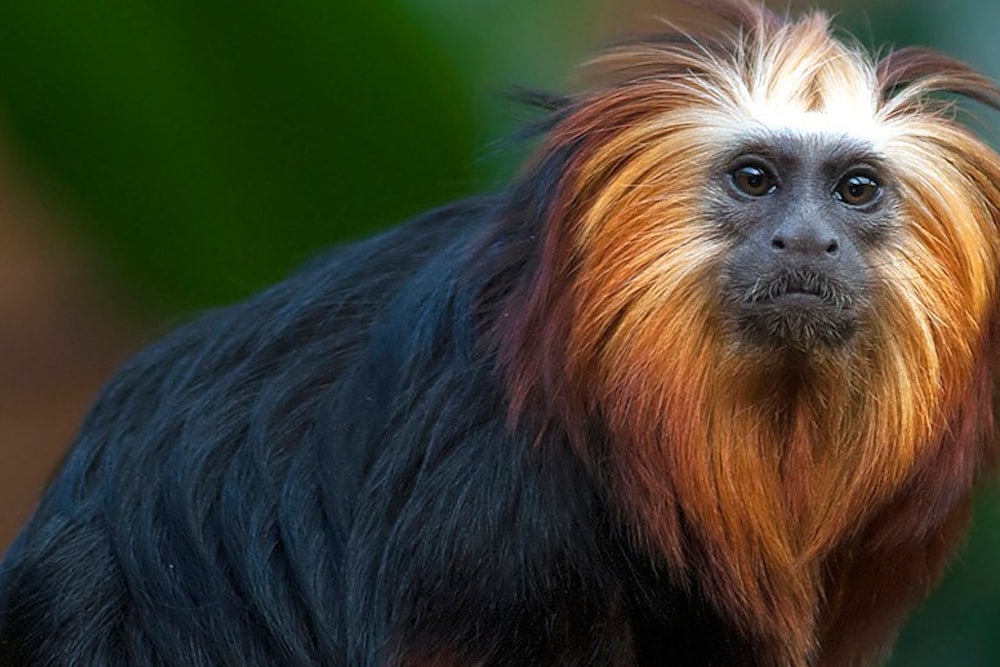A whistleblower from Bristol Zoo has revealed a series of unfortunate accidents involving endangered species. One involved a golden-headed lion tamarin, a small monkey native to Brazil, which fell into a pond and was killed by otters. In another incident, a male warty pig attacked his mate and killed his offspring. These critically endangered pigs are found on just two islands in the Philippines.
The knee-jerk media reaction to such accidents is to directly or implicitly blame the zoo for what happened. “So much for conservation!” said the Daily Mail, which also said the zoo was “under fire.” Gawker even dubbed it the British Zoo of Horrors.
However such reactions ignore something very important—it is impossible to completely eliminate accidents. Yes, we should be asking whether an accident was foreseeable and therefore preventable. But we also need to consider the probability of it occurring in the first place.
It is of course possible to imagine a monkey falling off a branch into a pool, but it is not highly probable. Primates make thousands of movements per day in trees and yet rarely fall. It’s the same with us humans. I once fell on ice and broke my ankle, but I knew the risk and I’d still take my chances again. Imagine a world or a zoo where we do not factor in probability when managing accident risk—a world of strict liability.
Perhaps zoos should keep monkeys away from their monkey bars because of the risk of falling. When one reads the news reports about such accidents it is clear that probability does not matter—it should not have occurred, period. Yet I wonder how many of these journalists or interviewees will be campaigning for the elimination of stairs. After all, these dangerous devices are responsible for millions of accidents and thousands of deaths each year.
There is a serious issue here: If we ignore probability and try to eliminate all accidents in zoos, then we will need to keep animals in padded cells. And social species could not be kept together in case one injures another one. It is after all foreseeable that these animals will compete aggressively with one another—male chimpanzees will fight for the opportunity to mate, for example.
Animals living in an accident-free world would have a terrible time and these animals would have minimal value for us humans in terms of education, conservation, research, or leisure—the goals of modern zoos.
The case of the warty hog is similar. Males of many species can present a threat to females and their offspring. One way to eliminate this risk would be to use artificial insemination—but of course this is usually more risky than allowing natural mating.
Accidents happen in the wild
Allowing accidents to happen in zoos simply mirrors conditions the animals experience in the wild. Monkeys may be well adapted for swinging between trees, but I have seen them fall to the ground on several occasions. Indeed, surveys have found that one-third of wild primates have broken bones in their lifetime. One of my friends saw a bear fall out of a tree, which, unlike my falling monkeys, did not scream and remained expressionless as it fell. The monkeys and bear all bounced, got up, and carried on with their lives, apparently none-the-worse for their accidents.
Bears, big cats, and polar bears are among the many species of mammals known to commit infanticide in the wild. My research team in Brazil even observed one incidence in wild titi monkeys. Infanticide can even be one of the greatest sources of infant mortality for some animals.
Yet there are no headlines about wild monkeys falling out of trees or polar bears eating their babies because we don’t feel responsible for the welfare of wild animals. The consideration of probability shows how absurd it is to believe we could create accident-free zoos and that, even if we could, such zoos would not be in the interest of animal wellbeing.
This article was originally published on The Conversation. Read the original article.
